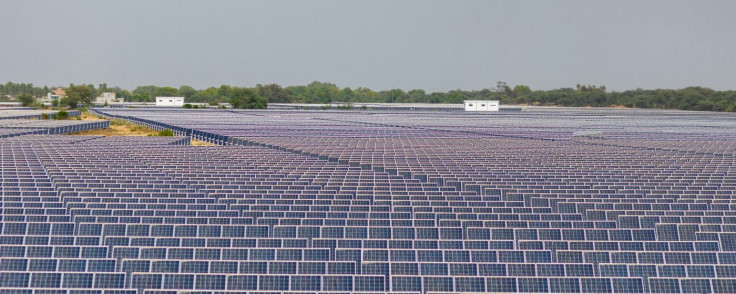Indian Company Wins Contract To Build World’s Largest Solar Power Project

KEY POINTS
- Adani Green will invest about $6 billion to develop 8 gigawatts of solar projects
- Adani Green noted the contract will create 400,000 direct and indirect jobs
- Modi’s government wants India to have 175 GW of renewable capacity by the year 2022
Adani Green Energy Ltd., an Indian renewable energy company based in Ahmedabad, Gujarat, won a bid to construct solar plants across India in one of the largest solar projects in history.
Adani Green, a unit of the multinational conglomerate Adani Group, will invest about $6 billion to develop 8 gigawatts, or GW, of solar projects, as well as 2 GW of additional solar cell and module manufacturing capacity.
The first 2 GW of generation capacity will commence by 2022 with the remaining installed in increments through 2025.
Funding for the massive project will be generated by a mix of debt and equity.
“With this [contract], [Adani Green] will now have 15 GW capacity under operation, construction or under contract thereby accelerating its journey towards becoming the world’s largest renewables company by 2025,” Adani Green said. “This award will take the company closer to its target of achieving an installed generation capacity of 25 GW of renewable power by 2025 which in turn will see it committing an investment of [ $15 billion] in the renewable energy space over the next five years.”
Adani Green also noted the contract will create 400,000 direct and indirect jobs.
Adani Green won the contract from Solar Energy Corp. of India, or SECI, which is part of the Indian government’s Ministry of New and Renewable Energy.
"[Indian Prime Minister] Narendra Modi made a commitment at the 2015 United Nations Climate Change Conference in Paris that India would lead the climate change revolution and will in fact fulfill [the] majority of its… commitments nine years ahead of the 2030 deadline," said Gautam Adani, chairman of Adani Group. "We are indeed honored to be selected… for this landmark award… In today’s world, climate adaptation cannot be considered independent of economic development priorities and both -- job creation as well as decarbonization -- must be simultaneous objectives.”
Modi’s government wants India to have 175 GW of renewable capacity by the year 2022.
The contract will also displace 900 million tons of carbon dioxide over its lifetime, Adani Green noted.
“The fact that renewable power will transition into becoming the world’s cleanest and most economical fuel is a foregone conclusion and the Adani Group intends to play a leading role in this journey,” Gautam Adani added. “This award is yet another step in our nation’s climate change promise to the world as well as enabling our nation’s [Self Reliant India Program]. It is another step towards fulfilling our group’s nation-building vision.”
The development will likely help Adani Green overtake ReNew Power Ltd. as India’s largest renewable energy company. (ReNew has 8.65 GW in renewable assets, while Azure Power Global Ltd., with a portfolio of more than 7 GW, will become the third largest company in the sector.)
Gautam Adani also said that by increasing local manufacturing, India can eventually create its own ecosystem of suppliers for solar cells and modules. At present, India imports more than 90% of its solar cell and module requirements from China, while domestic manufacturers can’t compete with cheap Chinese imports.
“Basically, we are as competitive as China. We’ll be able to develop ecosystems” Gautam Adani said.
Gautam Adani also said foreign investors were interested in forming alliances with local partners to invest in India’s renewable energy industry.
Earlier this year, for example, France’s Total SA (TOT) paid almost $500 million to acquire a 50% stake in a joint venture with Adani Green.
Rishab Shrestha, solar markets analyst at Wood Mackenzie, noted that SECI had made several attempts to kickstart the domestic manufacturing process through tenders but had failed to attract sufficient investors in the past.
“The cost competitiveness of domestic manufactured modules against Chinese imports was and still remains the key hurdle,” he said. “The drive for self-reliance on the energy value chain is becoming stronger as coronavirus disrupted the solar imports earlier in the year and impacted … installation activity.”
Shrestha added that; “Focusing on localizing [the] supply chain also offers significant job opportunities for the growing Indian workforce. The scale of renewable projects is also being given a sharp focus as it’s critical in driving down costs.”
© Copyright IBTimes 2025. All rights reserved.





















